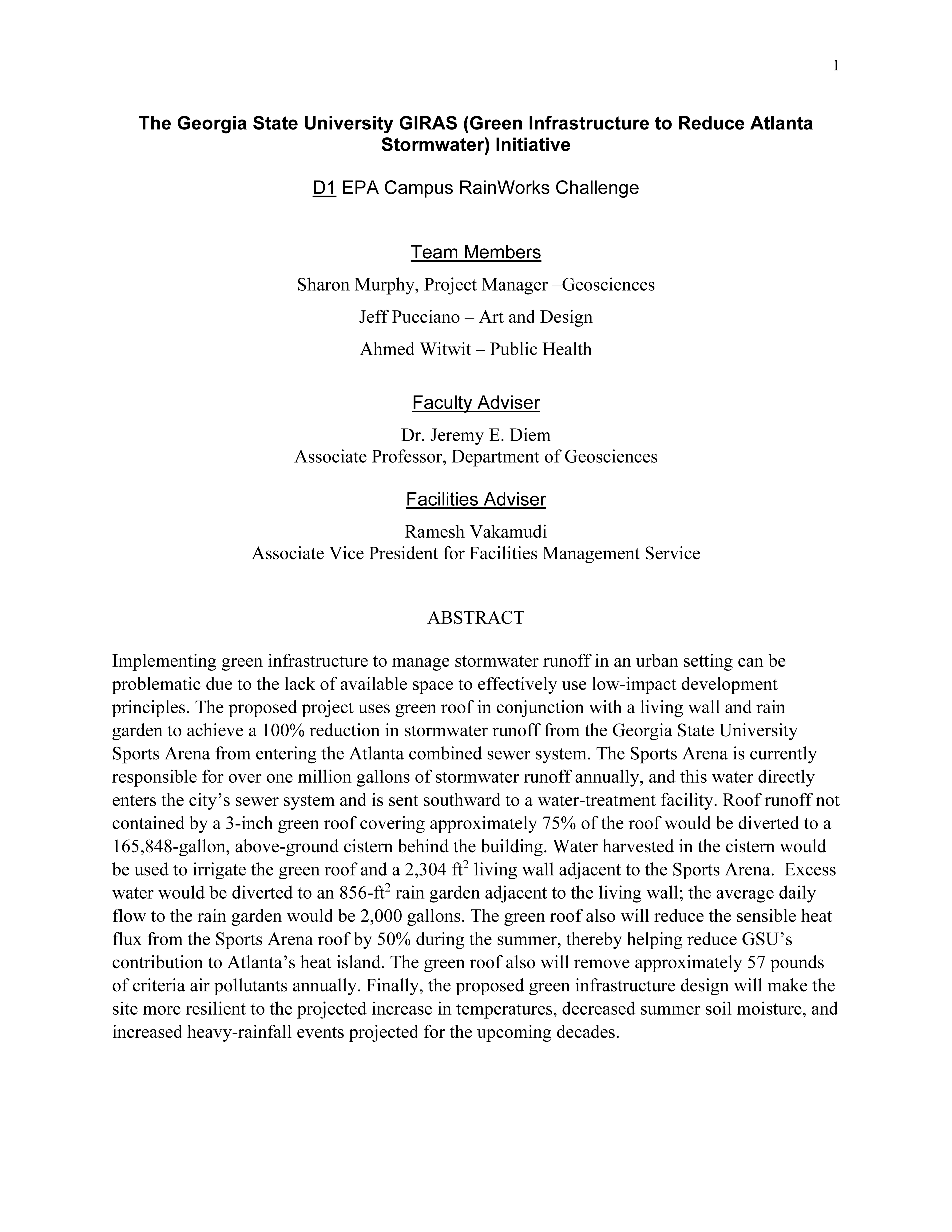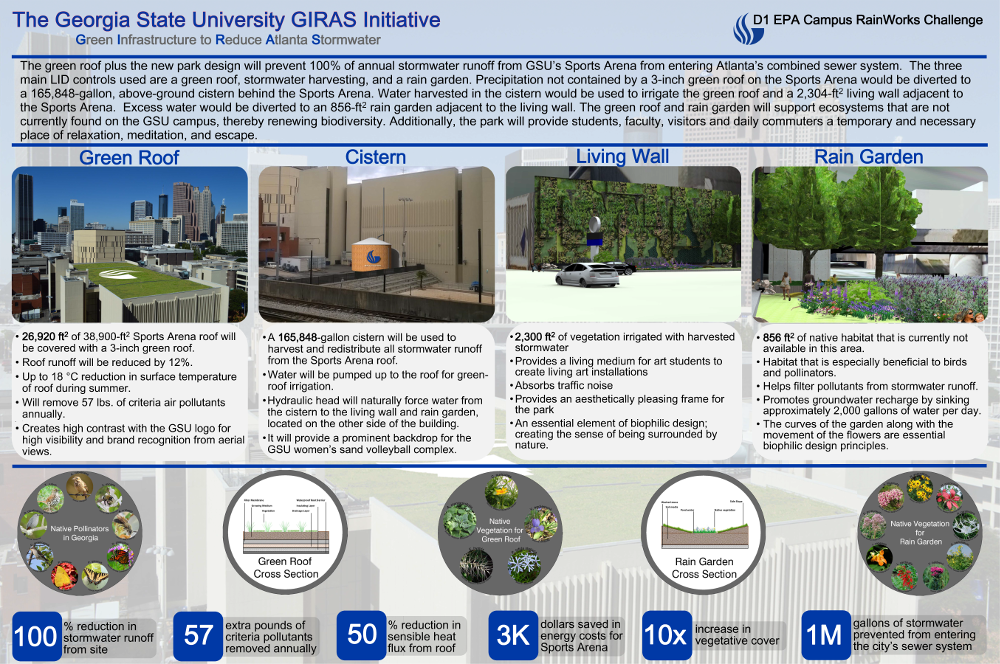The GIRAS (Green Infrastructure to Reduce Atlanta Stormwater) Initiative was GSU’s submission to the demonstration category of EPA’s 2015 Campus RainWorks Challenge competition. The student members were Sharon Murphy (Geosciences), Jeff Pucciano (Art & Design), and Ahmed Witwit (Public Health). Jeremy Diem was the faculty adviser, and Ramesh Vakamudi was the facilities adviser.
Atlanta, GA receives abundant rainfall and has massive amounts of runoff, with much of it passing over impervious surfaces and going directly to either combined sewer systems or local streams thereby leading to degraded water quality and flooding. Georgia State University (GSU), in the heart of downtown Atlanta, is comprised almost entirely of impervious surfaces and its roofs are responsible for nearly 40 million gallons of stormwater runoff annually. This project focuses on preventing all stormwater runoff from the roof of GSU’s Sports Arena from entering the city’s combined sewer system through the use of a green roof, cistern, living wall, and rain garden.
The area of the Sports Arena roof is approximately 39,000 ft2, and the total square footage of the portion of the roof designated for a green roof is approximately 32,300 ft2, or about 0.74 acre (see image below). The roof decking consists of 3-inch concrete with a flat surface across the extent of the roof making the Sports Arena an ideal roof for a case-study analysis of green roofs and green infrastructure on the GSU campus.

Adjacent to the Sports Arena on the corner of Piedmont Avenue and Decatur Street is a rarely used park space (see image below) that could be be transformed into a living wall and rain garden.
The Sports Arena can only support a 3-inch irrigated green roof, and the green roof alone (see image below) would reduce annual stormwater runoff by 12%. In the center of the green roof is a 5,308-ft2 “G” designed to be illuminated at night.
Precipitation not contained by the 3-inch green roof on the Sports Arena would be diverted to a 165,848-gallon, above-ground cistern behind the Sports Arena and above GSU’s beach volleyball courts.
Water harvested in the cistern would be used to irrigate the green roof, especially during the summer, and a 2,304-ft2 living wall (see image below) adjacent to the Sports Arena.
Excess water would be diverted to an 856-ft2 rain garden (see image below) adjacent to the living wall. It is estimated that a continuous daily discharge rate from the cistern into the garden would be approximately 2,000 gallons. The existing storm sewer entrance to the left of the rain garden should receive minimal to no runoff; however, it will prevent flooding of the park if the cistern is full and an extreme rainfall event occurs.

The green roof plus the new park design will prevent 100% of annual stormwater runoff from GSU’s Sports Arena from entering Atlanta’s combined sewer system.
The green roof and rain garden also will support ecosystems that are not currently found on the GSU campus, thereby renewing biodiversity (see image below). Additionally, the park will provide students, faculty, visitors and daily commuters a temporary and necessary place of relaxation, meditation, and escape.
The new green infrastrure, primarily the green roof, will reduce GSU’s impact on the summer urban heat island and decrease air-pollution levels. The mean surface temperature (i.e., the temperature of roofs, streets, etc.) of the campus at 11 A.M. is approximately 35 °C (95 °F). The green roof will reduce the temperature of the Sports Arena roof by up 18 °C (32 °F); therefore, it will reduce the sensible heat flux of the roof by up to 50%. The green roof, living wall, and rain garden combined will remove over 60 lbs. of criteria pollutants from the urban atmosphere annually, with the green roof responsible for more than 90% of the pollutant removal (see table below). Therefore, the new green infrastructure will remove roughly 15 times more air pollution than what the park currently does.
Links to the project narrative, design board 1, and design board 2 are provided below












